Daeseung Hanji Village & Hanok Traditional Culture Experience Center (대승한지마을한옥전통문화체험관)
12.0Km 2024-08-05
18-4 , Bogeom-gil, Wanju-gun, Jeonbuk-do
+82-63-242-1001
Daeseung Hanji Village in Wanju-gun, Jeollabuk-do, is where the famous Goryeoji (‘Goryeo Paper’) was first made in Goryeo 1,000 years ago. All guestrooms in the village are equipped with toilets, AC and water purifiers, plus pillows made of Korean paper and comfortable blankets. The dining hall kitchen can be used by guests, there is a large (60 sq metre) seminar room, and a yard where traditional games such as Geunae (swing) and Tuho (arrows) are played. The village runs a Hanji Experience Center, where you can learn about hanji history, manufacture and calligraphy.
Jeonju World Cup Stadium (전주월드컵경기장)
12.4Km 2024-04-07
1055, Girin-daero, Deokjin-gu, Jeonju-si, Jeonbuk-do
+82-63-239-2546
The Jeonju World Cup Stadium was built with tradition in mind as its roof and stands are designed with an image of traditional fan, the pillars in sotdae design and cables in 12 strings of gayageum.
NocWoonJae [Korea Quality] / 녹운재 [한국관광 품질인증]
12.8Km 2024-04-07
472-18 , Songgwangsuman-ro, Wanju-gun, Jeonbuk-do
+82-10-4450-6565
Nokwoonjae is a guest hanok in Oseong Hanok Village, Wanju-gun, Jeollabuk-do. It comprises two houses built on sloping land - Naunchae above and Unahchae below - with a corridor connecting the two. All rooms are built of timber and red clay - beneficial to both mind and body - and have large windows to let you enjoy natural views and breezes.Toast, jam, and milk are provided for breakfast, and self-catering is possible. Sagunja painting and tea ceremony experiences are offered, while local visitor destinations include Songgwangsa Temple, Wibongsa Temple, the 60m Wibong Falls (one of Wanseon’s ‘Eight Splended Views’) and Jeonju Hanok Village.
Soyang Hanok Stay[Korea Quality] / 소양고택 한옥스테이[한국관광 품질인증]
12.9Km 2024-04-07
472-23 , Songgwangsuman-ro, Wanju-gun, Jeonbuk-do
+82-63-243-5222
Located in Wanju, Jeollabuk-do, Soyang House was renovated as a hanok stay in 2010 following the relocation of three 180-year-old hanok houses in danger of demolition. Seohyeondang is furnished with a red clay ondol room equipped with a bathroom and a space for a tea ceremony, and Gahuidang has a cypress bathtub in the bathroom. In Jewoldang, the daecheong (wooden-floored hall) offers an excellent view of the mountain in front of the hanok, while in Hyeondang, the numaru (balcony-like raised veranda) provides a panoramic view of the entire premises. Breakfast and welcome tea are provided as a complimentary service, but cooking is prohibited. Nearby tourist attractions include Songgwangsa Temple and Oseong Reservoir.
O Sung Hanok Village (오성한옥마을)
12.9Km 2024-04-07
Daeheung-ri, Wangju-gun, Jeonbuk-do
+82-63-290-2727
Nestled between Jongnamsan Mountain and Wibongsan Mountain, O Sung Hanok Village has hanok mansion and approximately 20 hanok buildings consisting of cafes, galleries and more. The village also has various experience programs including forest walking trail that provides tradtional and cultural insights. The attraction is also known to visitors for its peaceful setting, bringing in visitors wanting to relax and meditate. Many artists who resides in the village offers gallery views, cafe, bookstore and more. In 2019, BTS stayed in the village for one week to shoot "BTS 2019 SUMMER PACKAGE" music videos and magazine photos. The village consistantly attracts ARMY and regular visitors.
Awon Museum & Hotel (아원)
12.9Km 2024-10-21
516-7 Songgwangsuman-ro, Soyang-myeon, Wanju-gun, Jeonbuk-do
+82-63-241-8195
Awon Museum & Hotel is a beautiful 250-year-old hanok building that was moved from Jinju in Gyeongsangnam-do to Oseong Village at the foot of Jongnamsan Mountain in Wanju, Jeonbuk State. Awon stands out from other hanok buildings in the way it merges traditional hanok with modern architecture and art. The name means "my garden," implying Awon's desire to be a cultural space for all who visit.
Gwisinsa Temple - Gimje (귀신사 - 김제)
13.0Km 2024-04-07
40, Cheongdo 6-gil, Gimje-si, Jeonbuk-do
+82-63-548-0917
Gwisinsa, located in Cheongdo Village, Geumsan-myeon, Gimje-si, is now a temple of the Jogye Order, but once belonged to the Haweom Order. The temple is widely believed to have been established by the great monk Uisang Daesa during the 16th year of King Munmu (676). However, some experts site the existence of the Namgeunseok stone animal sculpture as proof that the temple was originally the private temple of King Beop of the Baekje Kingdom.
Throughout history, the temple has had many names—Guksinsa, Gwisinsa, Gusunsa, and Gwisinsa (same English spelling, different meaning)—but not much is known about when the temple was called by which name. On the temple grounds are a 3-story stone pagoda and some stone sculptures including seoksu (animal statues) and budo (a stupa in honor of a great master). Inside the temple are Daejeokgwangjeon Hall (Treasure No.826), Myeongbujeon Hall, and Gongyangjib Chamber (a chamber for Buddhist offerings).
Barangsan Garden (바랑산가든)
13.2Km 2024-04-07
192 Daeyul 2-gil, Geumgu-myeon, Gimje-si, Jeonbuk-do
Barangsan Garden is a maeuntang (spicy fish stew) restaurant where visitors can enjoy their meal while admiring the scenery of Daeyul Reservoir. Their flagship dish is the megi tang (spicy catfish stew) made by boiling wild catfish and dried radish in a perilla seeds broth with seasoning. Other popular menu items include jap tang (assorted spicy seafood stew) made with freshwater fish and minmul jangeo gui (grilled freshwater eel).
Korea Expressway Corporation Arboretum (한국도로공사수목원)
13.4Km 2024-05-28
462-45 Beonyeong-ro, Deokjin-gu, Jeonju-si, Jeonbuk-do
+82-63-212-0652
The Korea Expressway Corporation Arboretum is located in Jeonju and operated by Korea Expressway Corporation. The arboretum was opened to counterbalance the environmental damage caused by the construction of expressways. As such, the arboretum maintains and promotes the conservation of many beautiful flora from across the country.
Wibongsanseong County Park (위봉산성)
13.4Km 2024-10-21
Daeheung-ri, Wanju-gun, Jeonbuk-do
+82-63-240-4224
Wibongsanseong County Park is located north of Jeonju, past Songgwangsa Temple through a tunnel of cherry trees. The park has some noteworthy sightseeing attractions such as Wibongpokpo Falls, Wibongsa Temple, and Dongsang Reservoir. Winbongsanseong County Park was founded at the site of Winbongsanseong Fortress, which was built under King Sukjong's rule in 1675 as a refuge site to safekeep the portrait of Joeson dynasty's founder King Taejo and the royal family's ancestral tablet in times of war or other national emergency. They are originally enshrined in Gyeonggijeon Shrine and Jogyeongmyo Shrine, and when Jeonju had fallen during the Donghak Peasant Revolution, the portrait and tablet were moved to a small palace inside the fortress. The original fortress walls were 16 kilometers in circumference with three gates in the north, east, and west, but only a half-moon shaped western gate remains standing today.
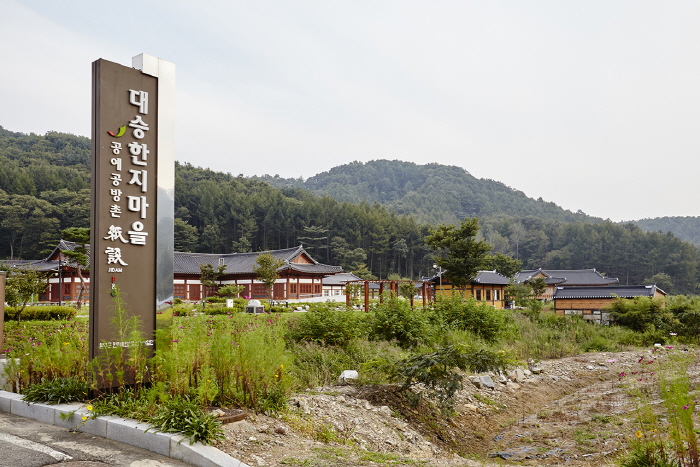
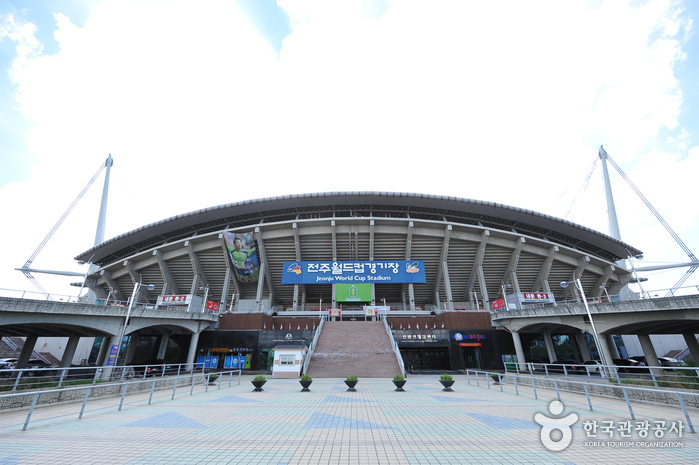
![NocWoonJae [Korea Quality] / 녹운재 [한국관광 품질인증]](http://tong.visitkorea.or.kr/cms/resource/71/2049271_image2_1.jpg)
![Soyang Hanok Stay[Korea Quality] / 소양고택 한옥스테이[한국관광 품질인증]](http://tong.visitkorea.or.kr/cms/resource/20/3008820_image2_1.jpg)

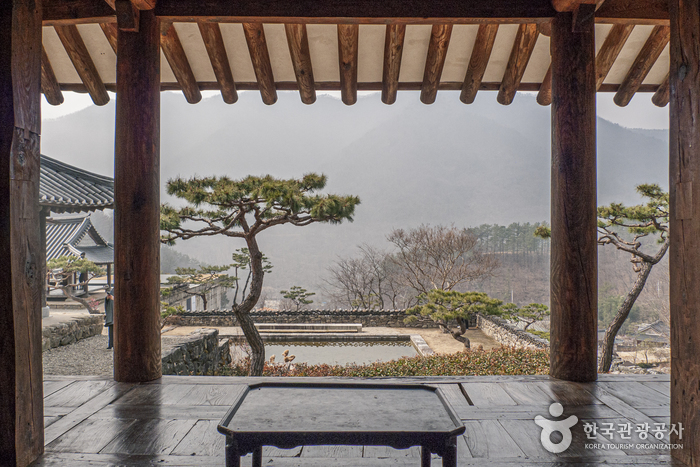
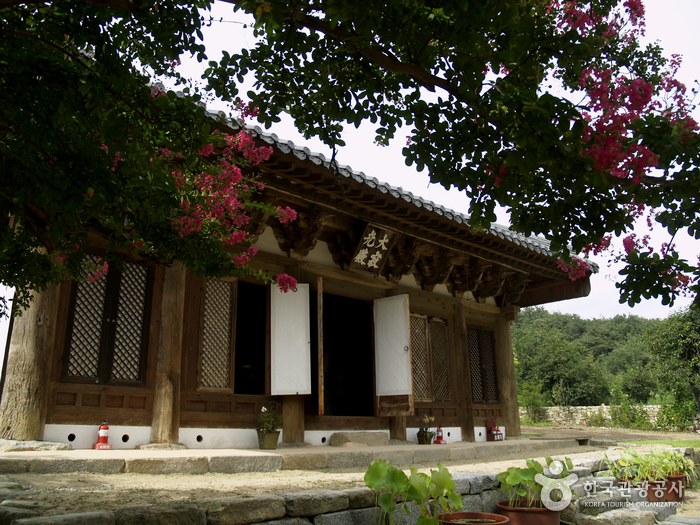
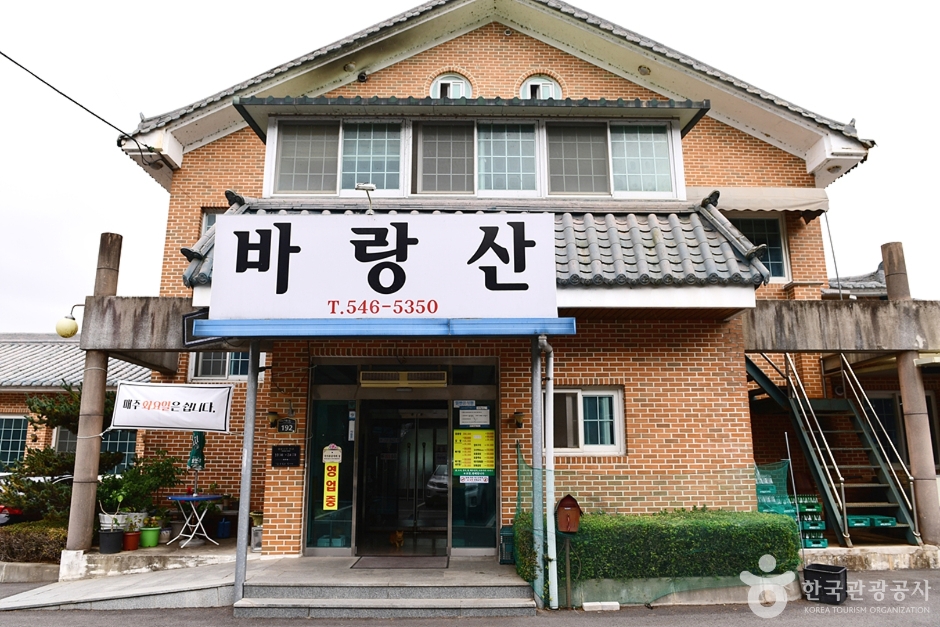
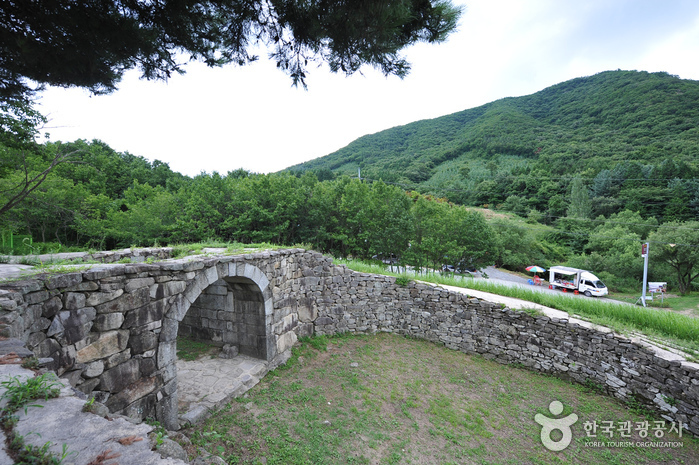
 English
English
 한국어
한국어 日本語
日本語 中文(简体)
中文(简体) Deutsch
Deutsch Français
Français Español
Español Русский
Русский